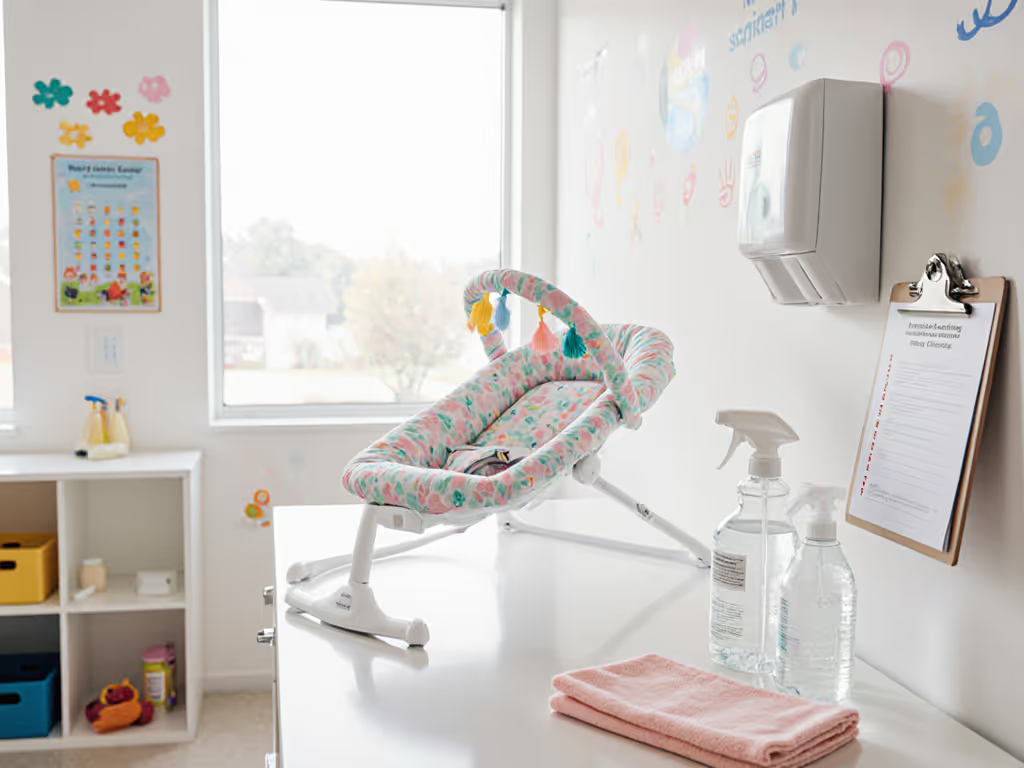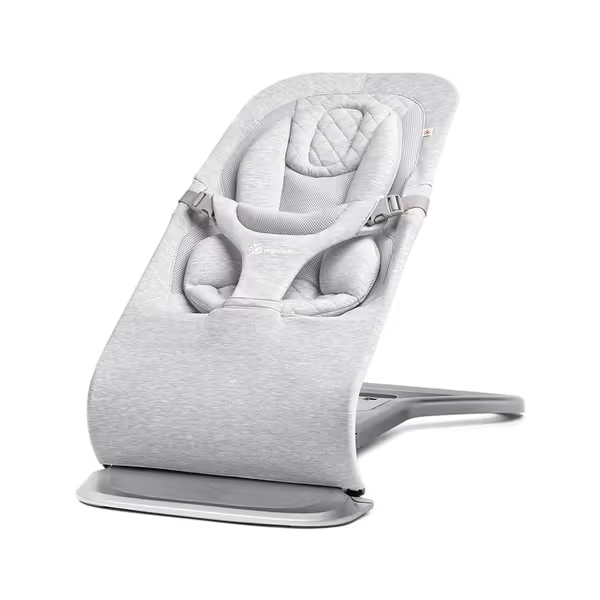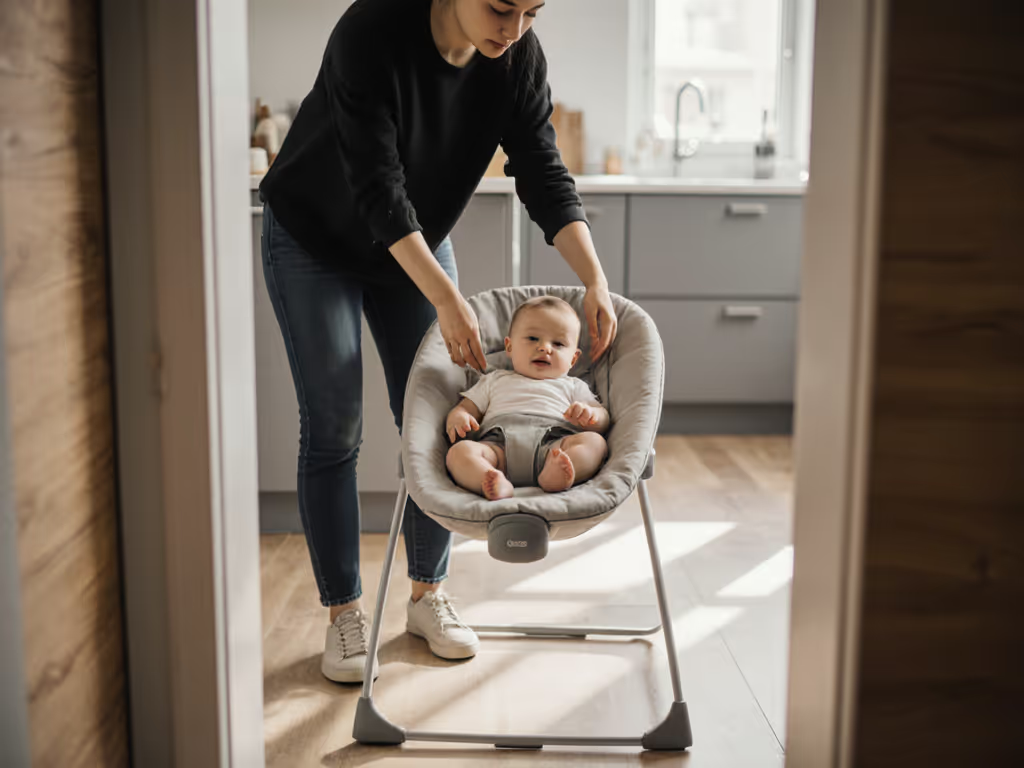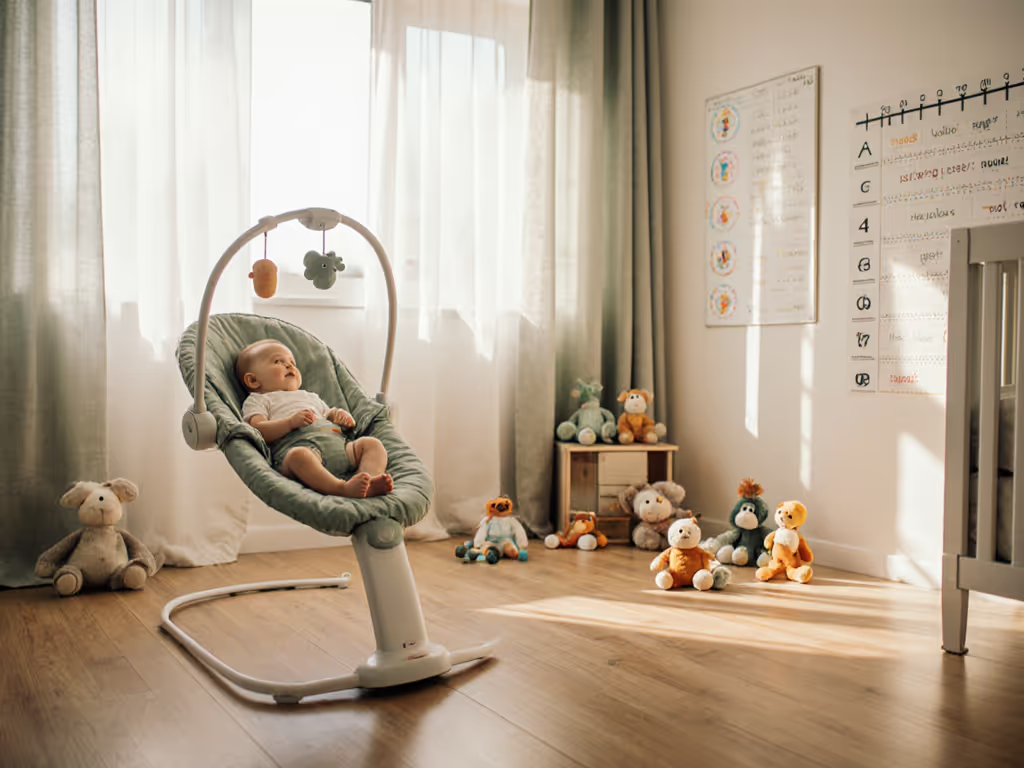
Bouncer Motor Skills: Head Control to Kicking Guide

When your apartment feels smaller than your baby's cry, bouncer motor skill development becomes a lifeline (not just a seat). But the right infant bouncer age integration matters more than you think. Forget endless bouncing hours; we're talking tiny, intentional moments that build strength while respecting your cramped floor plan and sanity. As an urban parent who's mastered the art of the 'two-song window' (more on that soon), I see how bouncers become silent allies (when used as developmental tools, not storage). Let's cut through the noise.
Why Your Tiny Space Needs a Smarter Bouncer Strategy
You've seen the sprawling nurseries on Instagram. Maybe you've even bought a bulky bouncer that now leans against your fridge, mocking your 700-square-foot reality. That panic? It's real. Tiny floorplans demand precision. Get practical space-saving bouncer tips to protect your floorspace. When bouncers become permanent fixtures, they steal space and hinder development (like limiting the tummy time babies need to build head control, a critical milestone by 2-3 months per pediatric guidelines). Worse, unstable bases or harsh reclines can strain delicate necks. But here's the truth no one shares: strategic bouncer use actually supports gross motor skills when timed to your baby's current stage. Not despite your small home, but because of it.
I know that anxiety. When my second was colicky, I'd cringe hearing a neighbor's motorized swing thrum through thin walls. If colic or reflux is part of your reality, consider our colic and reflux bouncers comparison. Our survival tool? The two-song window: kettle starts, bouncer in the doorway, lights dimmed, hum twice. Just enough time to breathe while my baby practiced kicking against gravity (without drowning us in noise or clutter). Two-song windows beat twenty-feature remotes, every single time.
Match the Bouncer to the Milestone (Not the Months)
Forget rigid age charts. Your baby's readiness, not the calendar, dictates safe use. Pair bouncer positioning with observable skills. For step-by-step setup, see our bouncer positioning guide. This keeps gear minimal and maximizes developmental impact.
Phase 1: Head Control & Early Kicks (0-3 Months)
Watch for: Baby lifts head briefly during tummy time (6-8 weeks), pushes up on forearms.
- Bouncer positioning tip: Use the deepest recline with a rolled receiving blanket under shoulders (never head!). This mimics the womb's support while encouraging neck muscle engagement.
- Why it works: Gentle bouncing from kicks stimulates the vestibular system (key for balance development). That wobbly head control? It's building the foundation for rolling over by 4-5 months.
- Small-space hack: Place the bouncer in your workflow path (hallway, kitchen doorway). When baby kicks, you're nearby prepping meals, but never turning your back. Supervision stays easy; real estate stays intact.
Calm over clever: A quiet, neutral bouncer blends into your space while doing developmental heavy lifting.

Ergobaby Evolve 3-in-1 Bouncer
Phase 2: Active Kicking & Core Strength (3-6 Months)
Watch for: Baby rolls tummy-to-back (4-5 months), swipes at toys while seated. If you're upgrading gear for this stage, check the best 3–6 month bouncers.
- Bouncer positioning tip: Shift to upright position. This engages core muscles as baby pushes off with feet (critical for crawling prep). Kicking development now fuels gross motor progression.
- Why it works: Studies confirm leg strength from kicking in supportive seats aids overall mobility. But crucially: limit sessions to 10-15 minutes. Floor time remains non-negotiable for rolling and pivoting skills.
- Small-space hack: Drape muslin over the bouncer's toy bar (if present). Eliminates visual clutter while keeping baby focused on leg movement. Rinse the fabric fast (no trapped milk odors).
Phase 3: Transition to Floor Play (6+ Months)
Watch for: Baby pulls to stand (8-9 months), cruises furniture.
- Bouncer positioning tip: Stop using it as a bouncer. Repurpose it as a seated play chair (if designed for it) while baby practices stacking blocks or turning book pages (one-handed tasks building fine motor skills).
- Why it works: Overuse past this stage limits crawling practice (a milestone hit around 8.5 months). Hip-healthy positioning remains vital. Seek products acknowledged by the International Hip Dysplasia Institute to avoid unnatural leg splaying.
- Small-space hack: Fold the bouncer flat immediately after use. If it doesn't stash under your sofa, it's space hogging. Period.
The Quiet Truth About Bouncer Safety in Tight Quarters
Let's be clear: bouncer for gross motor skills progress only works alongside floor freedom. Thin walls amplify your worry, but data trumps fear. The AAP warns against prolonged use in seated devices, which can delay milestones like rolling or crawling. For age and weight cutoffs, see bouncer age limits. Your solution? Time-bound, purposeful sessions.
- Head control bouncer positioning fails when babies slump forward. Check: chin should never touch chest.
- Developmental stage bouncer use ends the moment baby tries to scoot or stand. Forced bouncing now risks hip strain.
- Baby kicking development thrives with bare feet on a stable surface. Swap slip-prone socks for grippy booties so each kick builds strength.
Urban parents get this wrong most often: using bouncers as 'quiet zones' during WFH calls. But a 20-minute bounce session while you cook? That's intentional. Track it with your phone timer. When it dings, swap bouncer for floor mat. No guilt. Just rhythm.
Your Action Plan: Design Calm, Not Clutter
Your goal isn't finding the perfect bouncer, it's designing repeatable steps that turn 5 minutes into developmental gold. Start tomorrow:
- Observe first: Watch baby's kicking pattern during diaper changes. Are legs symmetrical? Strong?
- Position intentionally: For early head control, recline just enough to keep chin off chest. Test with that rolled blanket.
- Time it: Use a two-song window. Start the kettle, place baby in bouncer, hum along. When the second song ends, transition to floor.
That's it. No elaborate setups. No toy bars shouting for attention. Just you, your baby, and the gentle thump of tiny feet building the strength to crawl, stand, and eventually (run through your compact home).

Calm over clever isn't a slogan. It's how we reclaim peace in shoebox apartments. When your neighbor's swing drones on, remember: tiny rituals outlast flashy gadgets. Put the kettle on. Hum twice. Watch those legs kick. That's how motor skills grow, quietly, steadily, in the space you already have.




